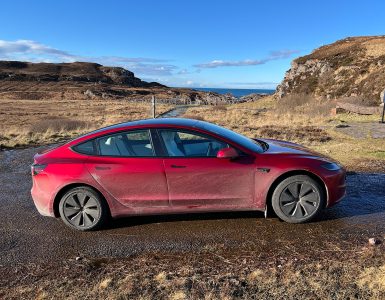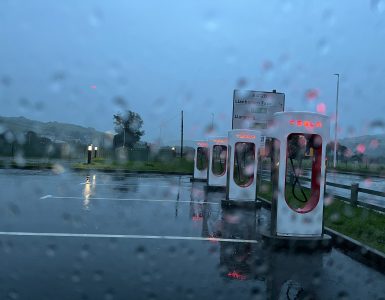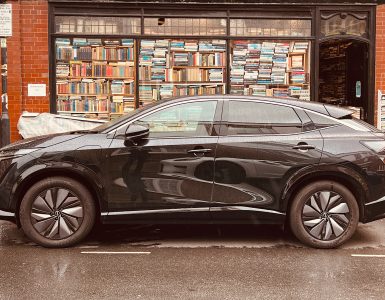Ccc submission
MyUrbanCar.com and @myurbancar @rivergecko provide advice and information to accelerate the shift to zero emission primarily electric vehicles powered by a renewable energy.
We strongly support the phaseout of all vehicles using (diesel or petrol) combustion engines by 2032 or sooner (including hybrid and plugin vehicles that are able to burn fossil fuel)
We would however, like to take the opportunity to draw attention to the obvious limitations of a policy based around phasing out the sale of petrol or diesel burning vehicles whether it be in 10, 12, 15 or 20 years time and give policy suggestions and support for more effective action.
- Ccc submission
- 1.0 The problems with any phase out Policy
- 2.0 The legacy motor industry response – Keep EVs on a leash
- 2.1 The good news for EVs
- 3.0 Policy levers to add to a phaseout date
- 3.1 High level Policy Objective – Set targets CO2 reduction targets for fuel sold for UK vehicles
- 3.2 Specific policy measures to reduce CO2 from fuel used in Transport
- 3.3 Target policy to transition the drivers with the highest CO2 first.
- 3.4 “Targeted” sledgehammer policy option for diesel vans
- 3.5 Targeted EV car policy
- 3.6 Reducing the number of combustion engine vehicles on the road
- 3.7 Reduce fuel demand for diesel and petrol vehicles already on the road
- 3.8 Overall Missed target penalties
- Click to open a link to CCC submission
1.0 The problems with any phase out Policy
The phaseout policy fails on the key metric which is to reduce the volume of diesel and petrol fuel consumed annually during the required time frame

- The evidence suggests that to have any prospect of limiting global temperature change to within 1.5C we need to cut carbon emissions sharply between 2020 and 2030
- The key metric on the reduction of carbon emissions from transport is volume of fossil diesel and petrol fuel we burn in the UK and the carbon emissions that result.
- Policy should be set based on a target to reduce of diesel & petrol volumes burned for road, rail and water transport annually between 2020 and 2030
- Even a 2028 ban on internal combustion engine (ICE) vehicles would be too late to reduce the volume of diesel and petrol fuel consumed before 2030. To achieve the scale of reductions needed in transport to limit warming to 1.5c a ban on sales of all new combustion engine vehicles from the start of 2021 would on its own be insufficient as a policy lever.
- The volume of fuel consumed will fall very slowly after the phaseout date. Look at the embedded tweet below for diesel fuel sales in Norway to see how slowly. Between 2011 and 2016 diesel new car sales halved from 78% to under 40%. It was only 2 years after this period in 2018 (when new diesel car sales had continued to fall to 20% share) that Norway recorded its first drop in diesel fuel consumed.. of 2% per quarter.
- The focus on the phaseout date provides a danger of further motor industry inaction till soon before 2032 followed by a lot of clamouring for exemptions nearer the time. An example of just how badly this could work out is when London banned further sales of diesel taxi’s. Drivers were bombarded with messages from Mercedes during the last 3 months before the ban telling them this was their last chance to get a good old diesel cab before they would be forced to buy electric. As a result Taxi drivers bought diesels literally till the day before the ban and are now trapped with massively higher running costs and deprecation of a diesel cab that passengers increasingly shun because the EV REX cabs are so much better to ride in and don’t stink of toxic fumes.
2.0 The legacy motor industry response – Keep EVs on a leash
The motor industry response makes it far from clear that they recognise or want to implement the nature of the carbon reduction action required between 2020 and 2030. The main features are:
- Supersizing continues: The diesel age was characterised by shifting buyers from smaller efficient petrol powered hatchbacks & saloons to much bigger, heavier cars with less efficient body shapes & transmissions powered by diesel engines. The small real world efficiency benefit of diesel engines was entirely offset and more by this dash to sell bigger cars. This trend continues especially by German, UK and Swedish premium brands, even in the face of EU fleet emission targets. The launch of new even bigger leviathans like the X7, Discovery and GLS above is a clear signal of intent regarding CO2. Just how inefficient is demonstrated by the aerodynamics of the first generation 2002 XC90 below which are slightly worse than cars Volvo built 45 years earlier.
Essentially the process that started with getting buyers out of a Golf into a BMW X3 has continued through the X5, X6 and X7 piling inefficiency on inefficiency.
- Misleading greenwashing The industry has introduced “Mild hybrid” diesel & petrol engines (which aren’t hybrid at all and can’t travel an inch on electric power) and “self charging hybrids“ as a substitute for meaningful action and designed to mislead consumers. If the industry can make a diesel or petrol car sound electric that’s a tick, if buyers insist on something greener dealers say EVs “aren’t ready yet” and will fob them off with plugin hybrids many of which struggle to add 25 miles range on a 3 hr charge. They are a distraction from real CO2 cutting solutions.. rearranging the deckchairs on the Titanic.
- The main recurring features of legacy carmaker EVs are:
Announced and re-announced years before they reach customers
rarely delivered on the promised schedule
Often severely limited in supply
Often offer inefficient vehicles that carry much more weight and deliver much less real world range than best in class
Typically priced at 25% to 50% more compared to fuel burning equivalents
or offered in small scale niche models - The German, UK and Italian motor industry seem to have been especially reluctant to let buyers have competitive electric cars and vans in the best selling segments and are the most determined to sell combustion engines till the last minute of the last hour of the last day. Even VW group, despite hopeful noises, remains clearly in this category for now.
- On the 3rd July 2020 JLR engineering boss Nick Rogers confirmed the company’s commitment to developing more combustion engined cars. “We really feel there’s a real place – on long journeys – for our ‘super-clean’ diesels and our ‘super-clean’ gasolines. We believe that’s a real, valid mode of transport.”
- At the same time JLR pushed back the launch of their XJ saloon, which would have been their 2nd niche EV, by another year. Their is no evidence that JLR or many other European legacy carmakers plan on EVs leading sales in their best selling cars within 5 years. Indeed to the contrary it appears they plan to continue replace existing cars with more replacement diesel and petrol fuel burning ranges combined with some plugin hybrids that continue to be introduced well after fossil fuel versions of the same car.
- This is exacerbated by dealers networks that make money from servicing not selling cars. They have a strong vested interest in not selling EVs because their servicing and repair requirements are so much less.
- The fact that the industry continues to invest in “old tech, not cleantech” makes it clear that management in much of the industry aims to grow EV sales as slowly as they can to avoid denting profits but just enough to avoid EU massive fines for breaching CO2 averages from their high emission bread and butter big sellers.
- The fact that Tesla is now valued at more than Toyota, VW and Ford combined hasn’t helped them see the light or realise sticking to combustion engines makes the entire legacy industry expendable, something it has not experienced before. Clean disruption will as a result see the end of many of these famous brands that have chosen not to adapt.
The legacy motor industry is failing to deliver big selling zero emission vehicles because they know how to make a profit on fuel burning vehicles but have so far been unable to figure out how to make a profit building pure EVs.
This is a chicken and egg situation as small scale EV production volumes don’t deliver economies of scale needed to make EVs profitable.
Do they think Henry Ford would look at this and say “good plan..hedge your bets and keep production small and hope costs improve one day!”
2.1 The good news for EVs
- The good news is that disruptors from outside the industry with 100% pure EV sales, primarily Tesla, are starting to cut seriously into combustion engine sales in some of their key niches like premium saloons now and SUVs from 2021. In California all German premium compact saloons and Lexus are now outsold by the Tesla Model 3. Even before the pandemic, sales of combustion engine cars were falling in America, Europe and the biggest Asian markets. Falling sales will undermine capital investment in petrol & diesel cars.
- There are also increasing volumes of EV supplies from some legacy carmakers.. Polestar/ Volvo and MG out of China, Kia/ Hyundai from South Korea and a wide range of new offerings from Renault Nissan and Peugeot Citroen Vauxhall. VW’s massive investment in EV models and production will also give the market a boost from 2021.
- UK policy is finally starting to look more joined up with grants, VED and VED surcharge exemptions and crucially the 0% BIK rate for company cars. The timing of the pandemic has removed a little of the policy impact of this. Consideration could be given to an extra year at 0% in view of this depending on how EV sales are looking at the end of 2020
UK EV sales have been rising sharply. We have been charting the welcome fall in diesel car sales (inc MHEV diesels) as we head towards the crossover point between diesel and rising AFV and EV sales.
While solid EV demand through lockdown delivered a brief early crossover in April 2020 we are focussed on the real crossover point. We believe the smart 0% BIK change will speed this process as company fleets & premium SUV buyers were the last bastions of the diesel market. The June EV share of 6.1% was impressive and may take a few months to pass as sales “normalize”. Notwithstanding this, we are hopeful UK EV only car sales share will be in the 12% to 16% range by mid 2021. Diesel share should be under this without including MHEV diesels but may still be level inc MHEVs. AFV sales including BEVs PHEVs and hybrids (but not MHEVs) should pass diesel sales before the end of 2020.
We cover electric van sales separately in the policy section. 98% of sales are diesel and Electric vans sales have been hampered by appalling pricing and specs. Just as an example a Renault Master delivers an official WLTP range of 125 miles for £57,000 or £456 per mile of range. By comparison according to Nextgreencar a Porsche Taycan 4S is £307 per mile or a spacious Tesla Model X with unlimited free charging is £278.
It seems clear some electric vans only exist so a diesel dealer can point at them and say how useless they are- not a surprise with tiny batteries and range under 100 miles for silly pricing. This is about to change with new models offering 150 to 200 miles for under £40,000. The Vauxhall Vivarro-e costs range at £193 per mile of range. The Maxus e-deliver3 also looks set to make a big impact.

2.3 The biggest potential CO2 win – Autonomous EVs
- From a CO2 reduction perspective autonomous vehicles offer an even bigger revolution than EV tech alone. For example Tesla cars on the road in the UK and elsewhere are already beginning to negotiate roundabouts with the driver supervising not driving. Full self driving is definitely not ready yet and key features are still missing but each release of a software update adds to it’s abilities. The “self driving” assistance provided by a Tesla Model 3 in summer 2020 is already utterly different than on the exact same car in Sept 2019.
- While timings remain highly uncertain we believe there is a high probability that Tesla and maybe others will be in a position to remove pedals and steering wheels and run an EV robotaxi fleet on any UK road by 2025
Autonomous EVs offered as a service per ride offer massive CO2 and financial benefits to the UK and the rest of the world.
- The annual cost to people using robotaxi’s is likely to be in the order of a 10x drop for the same journeys they perform today
- Private cars are the second biggest capital spend by UK households. Making cars a shared self driving service will release billions in household spending and reduce income inequality
- Autonomous vehicles may also shake up public transport outside urban mass transit areas. A 4 times a week subsidised village bus could be replaced by a self driving car on demand at low cost.
- By contrast some rail services could benefit from fleet cars to complete journeys to a final destination. An example would be many coastal holiday resorts in the southwest where the infamous Dr Beeching left mainlines nearby but removed rail lines to connect with the coastal resort themselves.
- These vehicles can be tailored to use more appropriately and efficiently than private cars – eg larger comfortable vehicles for a family off for the weekend on a long motorway run but small light pod vehicles allocated for 1 or 2 people on a city journey
- not only will self driving cars have the same 60% and rising CO2 reduction because they are EVs, when used in a ride on demand service they compound this by being on the road for the majority of the time. Conventional combustion engine cars, after all the CO2 expended in their construction have extraordinarily low utilisation rates and sit around parked around 96% of their operating life.
- For a full rundown on the likely benefits of autonomous electric vehicles see our recommended video presentation by Tony Seba, author of Clean Disruption of Energy and Transportation”,
- Self driving cars that don’t require parking provide extraordinary benefits for new uses of space, some of which have been previewed in some of the excellent responses to the pandemic from cycle lanes to school streets to outdoor dining. Arguably the effect on the arts, shopping, country pubs and leisure will be even more radical in rural areas where travel options are currently very limited and expensive unless you drive your own car.
Disclosure: I am both a Tesla shareholder and owner. I am a shareholder because I believe Tesla will deliver EVs now and full self driving sooner than most people would expect.
3.0 Policy levers to add to a phaseout date
3.1 High level Policy Objective – Set targets CO2 reduction targets for fuel sold for UK vehicles
We would propose to set a binding target for a 4% to 5% annual reduction in retail road fuel carbon emissions annually from 2020 to 2030. This would drive specific policy actions. We would set the baseline as 2019 which is generous and achievable.
We set out below proposals that could help achieve the target.
3.2 Specific policy measures to reduce CO2 from fuel used in Transport
We believe there are 3 broad approaches to achieving reductions in CO2 from diesel and petrol cars
- Target policy to transition the drivers with the highest CO2 first.
- Reduce the total number of combustion engine vehicles on the road
- Reduce fuel demand for diesel and petrol vehicles already on the road
3.3 Target policy to transition the drivers with the highest CO2 first.
We believe there is a very strong case for converting the drivers producing the highest CO2 from combustion engines first. In a sign of the magnitude of the policy mess that the UK and EU dash to diesel was.. it is UK diesel and not petrol drivers that we need to focus on.
Even a top level look at the numbers shows 18.5m petrol car and van drivers burn 16.2 billion litres of petrol a year or 876 litres per petrol driver.
By contrast the smaller number of diesel car and vans, 16.9m of them including around 4m diesel vans, burn a staggering 20.8n litres of diesel at retail pumps or 1,231 litres per vehicle.
If you assume half of commercial diesel fuel sold is used for van fleets (with the other half used by HGVs) the figures are even worse with 16.9m vehicles guzzling 25.5 billion of diesel fuel or 1509 litres each.
In my article “the big fat diesel con, why diesel drivers produce more CO2 not less” I lay out the case why diesel drivers produce more carbon emissions and the sources for these numbers. Diesel only looked much more efficient by:
- using NEDC tests that massively overestimated real world economy and underestimated CO2 from diesel vehicles relative to petrol
- looking at the car not the driver. Yes the driver of a diesel Golf produced slightly less CO2 compared to a petrol Golf. The trouble is in the real world the diesel driver didn’t leave the showroom in a Golf, he upsized to a bigger heavier saloon, estate or SUV like a Tiguan or Touareg that produced more CO2 not less. Diesel and the growth in PCP finance simply allowed drivers into cars they would have never imagined driving before.
1 liter of diesel weighs 835 grammes. Diesel consist of 86,2% carbon, or 720 grammes of carbon per liter diesel. In order to combust this carbon to CO 2, 1920 grammes of oxygen is needed. The sum is then 720 + 1920 = 2640 grammes of CO2 /liter diesel.
Source- Ecoscore
Of course this understates the position because each litre of diesel fuel produces 2.68kg of CO2.. compared to 2.31 for petrol. So if a diesel and petrol vehicle consume the same 8L/100km (35.31MPG) the petrol will produce of 211g of CO2 per km, compared to 191g/km for the petrol.

Our stats based on RAC average mileages for petrol and diesel vehicles suggest diesel drivers use more fuel per mile and travel many more miles than petrol drivers resulting in an estimated annual
- 2.023 tons of CO2 for each petrol vehicle in the UK
- Between 3.298 tons and 4.044 tons of CO2 per diesel vehicle
3.4 “Targeted” sledgehammer policy option for diesel vans
The van fleet is a vital focus for rapid conversion to EV. They do high mileages, are on city streets for large amounts of time (and highly polluting) and around 98% of sales are still diesel. We believe EV vans being launched in 2020 are finally good alternatives but the price differential is still around 40%. We propose using a sledgehammer to move this market rapidly
- a first year VED surcharge of £2,000 on new diesel vans
- an increase in the grant for BEV vans from 20% to 40% up to a maximum of £40,000 ie a grant of up to £16,000.
- The aim would be to flip the price differential between electric and diesel vans on a fiscally neutral basis starting in 2021
- Initial supply issues will supress take up but it will allow the UK to soak up a large proportion of European electric van supply and boost volumes which will bring prices down over time.
- The aim would be to increase the new diesel van VED surcharge by £1,000-£2000 while reducing the grant by 5% to 10% increments as the situation allows.
- The target would be 10% EV van share in ’21, 25% in 2022, 40% in 2023 and over 60% by 2025.
For a new Electric Vauxhall Vivaro-e the longer range 75kW version would fall from around £39,500 to £23,700, the shorter range model from £35,000 to £21,000. This compares with the base diesel at £24,700 before adding the £2,000 diesel surcharge. These are undiscounted list prices. Diesel discounts are likely to be higher.
3.5 Targeted EV car policy
It is much harder to target policy for switching diesel car drivers to EVs. For a start sales of diesel cars are crashing so fast it makes buyers hard to find other than buyers of large premium saloons and SUVs. Total diesel sales in 2019 were 615,705. The half year 2020 figure is 140,841, pandemic affected but also another welcome drop in share from 26.6% in 2019 to 21.4% in H1 2020 and 18.5% in June 2020 (all figures inc MHEV diesels).
If we want to cut diesel car sales to zero then a fuel escalator for diesels will probably be most effective. Diesel buyers were attracted to the fuel because the cars were subsidised by tax benefits on purchase as well as affordable running costs on bigger new cars. A regular step increase in VED for combustion vehicles with above average CO2 per km along with a return of the fuel duty escalator with higher rates on diesel fuel should be sufficient. At the very least diesel fuel duty should reflect the 15% or so higher CO2 produced per litre of diesel.
Finally all diesel vehicles should be subject to ULEZ and CAZ charges by 2025. There is no justification for the majority of Euro6 diesels on the road to be exempt based on their real world pollution levels.
3.6 Reducing the number of combustion engine vehicles on the road
Having driven an EV for 5,500 miles over the last 9 months I used to think they were the future. I still do but my perception has shifted.. to me an EV is the present and future and when I hear a petrol or hear or smell a stinky diesel engine car or van near me it is the past. Like seeing a steam train or beer being delivered on a cart by shire horses. Sadly these diesel vehicles are still in the present.
Like with diesel vans I believe purchase price is a big stumbling block. Buyers will soon be pleased with the lower running of an EV anyway so that isn’t the issue. Many young buyers really want an EV but with cars like a Corsa-e costing around £30,000 they are out of reach.
My policy proposal would be a £2,000 additional surcharge on the current VED for new diesel cars and £1,000 on petrol cars. EV’s under £30k would get a 20% grant, 10% for £30k to £40k and 5% for up to £50k.
The combination of surcharge and grant would aim to allow drivers to switch to EV’s without a penalty in the under £30k segment for the first time.
3.61 Policy on self driving cars
As we covered earlier we believe that if, and it is a big if, self driving EV‘s do arrive between 2023 and 2030. they will, compared to diesel and petrol cars, have the ability to help us achieve or exceed climate change goals – solving the problem of burning fuel by using renewable energy and the issue that one of our most expensive assets are only actually used or driven around 4% of the time. As a back of an envelope then
- if correct 10 ICE cars worth of carbon emissions would come down to
- probably 30% or 3 ICE cars worth of lifetime CO2 by 2025 and zero for cost of running from a largely carbon free off peak power grid
- if the utilisation rate on a self driving fleet EV is 5x more than existing ICE cars then you only need 2 cars not 10
- that should offer a possible 94% reduction in CO2 for the same number of car journeys we do today and for less cost.
I think we should assume the debate on self driving has passed the “if” stage but the when varies from 2 to 25 years depending on peoples view of the progress being made!
- Whichever side of these numbers turn out correct we in the UK should decide in advance whether we want to be at the front of this technological shift, or at the back.
- We also need to work out in advance what would be required for approval unless we want to be a follower, in which case we can copy others.
- While this could change, the EU stance on self driving tech is much more cautious than the US.
- It is worth noting the benefits are only unlocked once these EV’s can travel empty and when passengers are no longer in any sense “driving or in charge” of the vehicle.
VtoG
This really deserves a whole report of its own. Using the batteries in electric vehicles to give power to the electricity grid at key times is useful for EV owners but vital for a power grid using high proportions of renewable energy. It seems sensible that VtoG street chargers be developed that both driven and autonomous EV’s can hook up to on our streets. Otherwise V2G will be limited to EV’s whose owners have a driveway or depot. This will need work on planning, product design and standards over an above existing VtoG plans but could massively increase the number of potential donor EV’s when a power boost if needed.
3.7 Reduce fuel demand for diesel and petrol vehicles already on the road
- We would support bringing back the fuel duty escalator and bringing in higher levels for diesel fuel as needed to manage demand and keep CO2 within target
- We support measures to reallocate some road space to allow more safe cycling and segregated from vehicles which should reduce fuel usage and have health benefits.
- We have grave misgivings about road pricing which would require enormous IT investment and be very prone to avoidance.
- if any legal or planning rules require for fuel stations to offer diesel these should be removed provided petrol or EV charging facilities are offered and there is at least 1 diesel pump within 30 miles.
3.8 Overall Missed target penalties
- In any year that misses the fuel volume based carbon emissions target, the phase-out of all cars containing a petrol engine should move forward one year while for any diesel car or van the phase-out date moves forward two years
- In addition the fuel escalator should be ratcheted up more quickly to achieve compliance
Click to open a link to CCC submission
Due for submission by Friday 31st July 2020
Web version updated at www.myurbancar.com/






